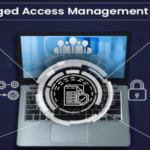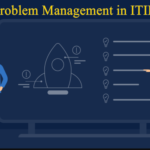What protects your company against disruptions?
You must not have thought about it, but we did. Here are eight tips for building resilient software applications and features that Mirat.ai shares with you.
Know that important business, and user apps will always be available, even when technology changes? Therefore, there is a necessity of a business resilience software.
Resilience is the capacity to maintain service levels despite planned or unanticipated disruptions.
Resilience is expecting the unexpected and responding in a way that minimizes downtime. Are you ready to boost your IT resilience today?
Here are some suggestions and tactics we’ve learnt through working with clients that will help you develop a more robust IT environment.
- Prioritize likely outcomes: Many companies have spent a lot of time building a robust DR plan. In the event of a disaster, they failover to their DR target. A DR plan must include this. Worse yet, daily issues affecting your vital apps. What happens if your SAN fails? What if the SAN won’t shut down? Was there a plan to replace the missing fibre?
- Focus on averting disasters: You may have a mission-critical business resilience framework that relies on infrastructure with single points of failure, such as a SAN array. As a result, business owners and application SME’s are often unaware of what occurs when the infrastructure supporting their application fails. This where the need of business resilience software emerges. Identify potential failure spots beyond the application infrastructure. Examine all app dependencies to see how you have utilised the business resilience framework.
- Know the strategy’s breadth: IT utilities and development environments are vital to production, even if not part of the recovery strategy. Your development team can’t innovate if its code repositories or digital workspaces aren’t recoverable. If your single-sign capability to Salesforce.com is broken, your sales staff cannot follow up on new leads.
- Use existing data: Your company has tremendous data, and spreadsheets have been imprisoned in silos for years. Collect and aggregate data. Great technologies exist to construct consolidated views of data and map dependencies and data gaps.
- Link SLAs to data protection tools capabilities: Always start with company needs. Don’t assume a capital outlay is required to close a gap. Be aware of your surroundings. Dependencies, dependencies! Make a list of your apps and their dependencies. Be mindful of your dependencies between applications, services, and infrastructure. Often, retrieving the primary application is insufficient. Stakeholders need to understand the impact of the upstream and downstream interactions. Suppose you recovered your major application on the public cloud but were unaware that a web service provider you employed for your payment flow required notification of an IP address change. So you haven’t recovered! Visualizing the total impact of an operational issue like a failing server saves time and money. A resilient security software.
- Test your tests AND your plan: Identify the processes in a failover test and their expected timing. It’s remarkable how many little difficulties can be fixed by simply going over the project with everyone. Analyze your SLAs and test the scenarios. Compare your estimates to the actual timing from your test. Conduct workshops where “lessons learned” will be shared.
- Keep your plan alive: Make it flexible. Put in place policies and procedures to alert you to potential threats to your resiliency plan. Take, for example, a new application module that requires more servers and resilient security software to host. Do you need to revise your plans? Why not make resilience workstreams “smart” and account for the change?
- Create and update a roadmap: Have a plan and use it as a roadmap to seek ways to integrate it with other IT efforts like tech refresh, cloud adoption, etc. Update this roadmap. Frequently, TDS advises companies undergoing IT transformations that this is a good time to strengthen overall IT resiliency.
Learn more about how mirat.ai can help you build and secure your enterprise with its automated, integrated, and modern modules.
Mirat.ai’s IT Infrastructure Management is Affordable & Easy to use! Get your Dashboard ready in only 5 Minutes. Request for Trial/Demo now (or) Contact our Team Now .
Contact Information:
Hema
Sales Executive
Phone: +1-315-636-4213
Email: sales@mirat.ai
Website: https://www.mirat.ai/


